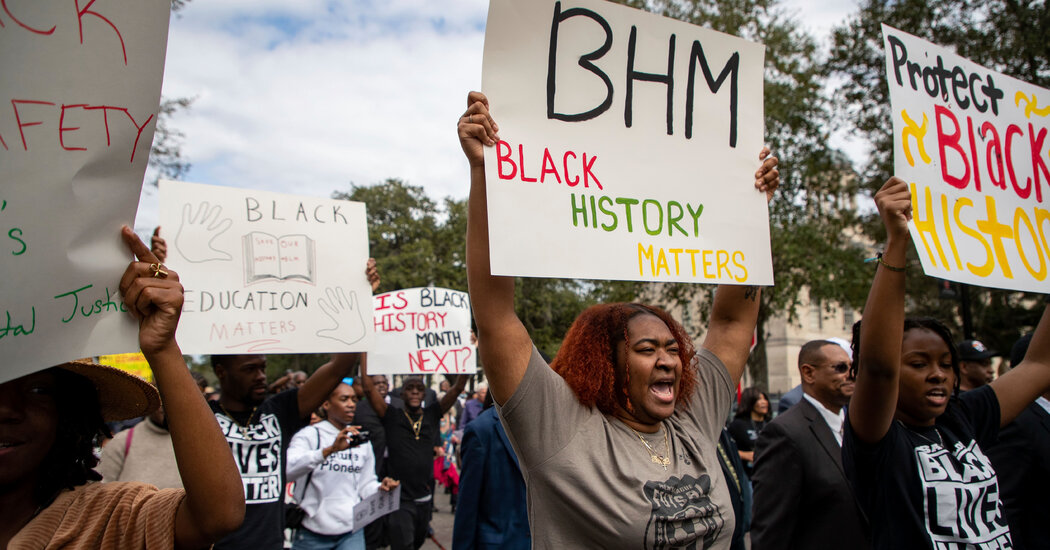As she makes an effort to be more vocal in classroom discussions, she says it’s easier when the material is relevant to her own experiences. “If we’re learning about a female poet who happens to be Black, I’m going to step into the conversation,” she said.
Even in New York City, the efforts have been met with intense pushback at times, mirroring the conflicts in hundreds of school districts across the nation. Some families argue that such lessons and materials exacerbate divisions between students and are inappropriate for younger children, or could make white students ashamed of their backgrounds.
Some state lawmakers have unsuccessfully tried to ban critical race theory, a university-level framework that has been used as an umbrella term for lessons on race. Critical race theory is not taught in K-12 public schools in the state and there are no plans to introduce its concepts; other legislators introduced a bill this year to require that schools statewide adopt culturally responsive teaching.
Mamoona Hassan, a senior at Brooklyn Technical High School, said that she wishes the diversity of the city’s Asian American communities had been better reflected in her education.
As a child in a Bangladeshi family, Ms. Hassan saw firsthand the need to better educate not only students, but teachers too: While in high school, one assumed she was Indian, and began chatting with her about the country’s caste system.
But in a recent English class, Ms. Hassan, 17, was struck upon reading “Mother Tongue,” an essay by the author Amy Tan about her childhood as the daughter of Chinese immigrants. She hopes students encounter such stories more often.
“You feel a sense of satisfaction and validation,” she said. “The perpetual foreigner stereotype is still applied to us. And so if we’re included in even these little ways, it’s very much impactful and it makes us feel like we’re also American, and that we also belong to this country.”
Lola Fadulu contributed…
Read the full article here





